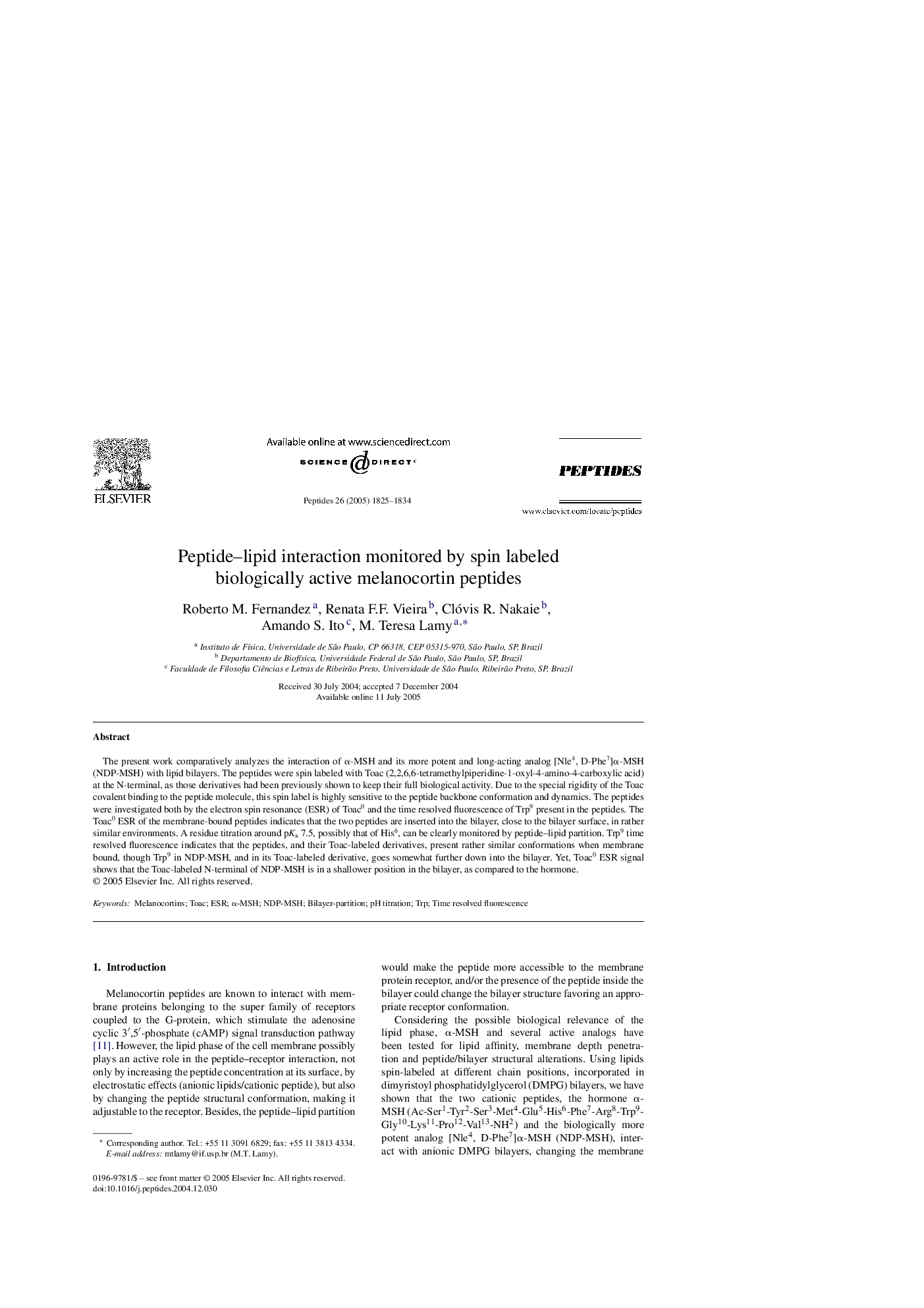| Article ID | Journal | Published Year | Pages | File Type |
|---|---|---|---|---|
| 2008186 | Peptides | 2005 | 10 Pages |
Abstract
The present work comparatively analyzes the interaction of α-MSH and its more potent and long-acting analog [Nle4, D-Phe7]α-MSH (NDP-MSH) with lipid bilayers. The peptides were spin labeled with Toac (2,2,6,6-tetramethylpiperidine-1-oxyl-4-amino-4-carboxylic acid) at the N-terminal, as those derivatives had been previously shown to keep their full biological activity. Due to the special rigidity of the Toac covalent binding to the peptide molecule, this spin label is highly sensitive to the peptide backbone conformation and dynamics. The peptides were investigated both by the electron spin resonance (ESR) of Toac0 and the time resolved fluorescence of Trp9 present in the peptides. The Toac0 ESR of the membrane-bound peptides indicates that the two peptides are inserted into the bilayer, close to the bilayer surface, in rather similar environments. A residue titration around pKa 7.5, possibly that of His6, can be clearly monitored by peptide-lipid partition. Trp9 time resolved fluorescence indicates that the peptides, and their Toac-labeled derivatives, present rather similar conformations when membrane bound, though Trp9 in NDP-MSH, and in its Toac-labeled derivative, goes somewhat further down into the bilayer. Yet, Toac0 ESR signal shows that the Toac-labeled N-terminal of NDP-MSH is in a shallower position in the bilayer, as compared to the hormone.
Related Topics
Life Sciences
Biochemistry, Genetics and Molecular Biology
Biochemistry
Authors
Roberto M. Fernandez, Renata F.F. Vieira, Clóvis R. Nakaie, Amando S. Ito, M. Teresa Lamy,
